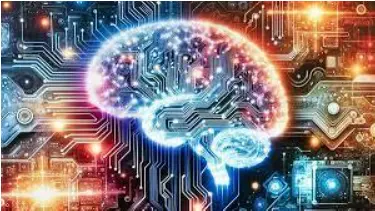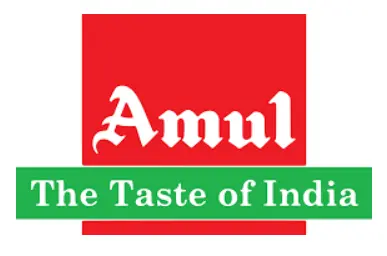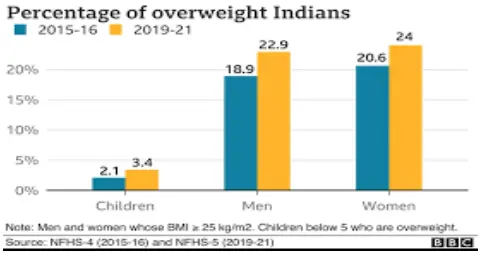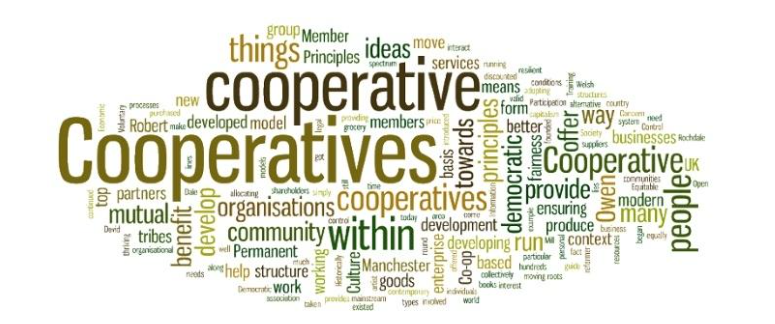Monday, 11th March 2024
Integrating Aadhaar with Voter ID: Enhancing Electoral Processes
In News: The Election Commission of India has requested the government to amend the Representation of the People Act, 1950, and voter forms to eliminate the need for voters to provide reasons for not linking their Aadhaar number with their voter ID.
Representation of People Act: The Legislative Framework
- The Representation of the People Act, 1950
- Addresses seat allocation, delimitation of constituencies, and voter qualifications.
- Establishes guidelines for the preparation of electoral rolls.
- The Representation of the People Act, 1951
- Governs the actual conduct of elections, by-elections, and related offences and disputes.
- Regulates the registration of political parties and membership qualifications.
Previous Attempt to Link Voter Card and Aadhaar Number
- National Electoral Roll Purification (2015)
- Aims to eliminate bogus entries from electoral rolls.
- Supreme Court's interim order in the Puttaswamy case halts the Aadhaar linking initiative.
- Revival Effort (2019)
- Election Laws (Amendment) Bill, 2021, introduced to enable Aadhaar and Voter ID linkage.
- Passed in December 2021, allowing EC to resume Aadhaar collection from July 2022.
- Challenges in the Supreme Court (2022)
- Form 6B introduced for Aadhaar submission, criticized for limiting options.
- EC commits to making clarificatory changes following a legal challenge.
Broad Reasons in Support of Linkage
- Enhancing Electoral Roll Accuracy
- Targeting duplication and misrepresentation in electoral rolls.
- Facilitating Advanced Voting Mechanisms
- Supporting ECI's plans for electronic and internet-based voting.
- Enabling Remote Voting for Migrants
- Providing 'remote' voting rights to domestic migrants.
- Proxy Voting Facilitation
- Facilitating proxy voting, potentially requiring Aadhaar-backed voter verification.
Source: IE
Sangeet Natak Akademi Fellowships and Awards
In News: In New Delhi, the President of India recently bestowed Sangeet Natak Akademi (SNA) Fellowships and Awards for the years 2022 and 2023.
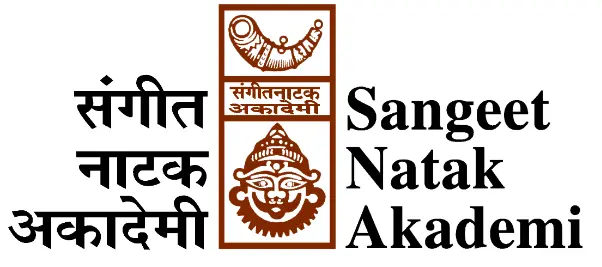
Sangeet Natak Akademi Fellowship
- Prestigious Honor
- The Sangeet Natak Akademi Fellowship (Akademi Ratna Sadasyata) stands as the most esteemed recognition bestowed by the SNA.
- Eligibility Criteria
- Recognizes established individuals in music, dance, and drama.
- Individuals below 50 years are typically not considered.
- Honors and Benefits
- Akademi Fellowship includes a purse of Rs. 3.00 lakhs, a Tamrapatra (copper plaque), and an Angavastram (shawl).
- Nomination Process
- Recommendations come from current fellows of the Akademi and members of the General Council.
- Evolution of Fellowship Seats
- Originally had 30 seats, increased by 10 in 2010, with two seats added annually over five years.
Sangeet Natak Akademi Awards
- Historical Significance
- The SNA Awards, with a history of over 70 years, aim to honor practitioners, gurus, and scholars in music, dance, and drama.
- Inception and Integration
- Awards in Hindustani and Carnatic music began in 1951, pre-dating the establishment of the Akademi.
- Initially known as Presidential Awards, they were later incorporated into the Sangeet Natak Akademi Awards.
- Recognition and Rewards
- Each award comprises Rs. 1.00 lakh, a Tamrapatra (copper plaque), and an Angavastram (shawl).
- Annual Conferment
- Presently, 41 awards are conferred annually, with over 1298 artists honored to date.
|
UPSC Previous Year Questions Prelims (2009) Q. Consider the following statements:
Which of the statements given above is/are correct? (a) 1 only Ans: (c) |
Source: PIB

India-EFTA TEPA: India is Set to Conclude a Trade Pact with EFTA Bloc
In News: India is on track to finalize a trade agreement with the European Free Trade Association (EFTA) on March 10. The EFTA includes Iceland, Liechtenstein, Norway, and Switzerland.
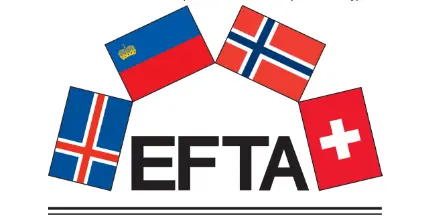
Understanding the European Free Trade Association (EFTA)
Overview
- Formation and Purpose
- EFTA established in 1960 by the Stockholm Convention.
- Intergovernmental organization comprising Iceland, Liechtenstein, Norway, and Switzerland.
- Aims to promote free trade and economic integration among member states.
- Relationship with EU
- Operates alongside the European Union (EU).
- Member states participate in the European Single Market and the Schengen Area but are not part of the EU Customs Union.
- Key Functions
- Maintaining and developing the EFTA Convention.
- Managing the European Economic Area (EEA) Agreement with Iceland, Liechtenstein, and Norway.
- Expanding the global network of free trade agreements.
Economic Relations with India
- Trade Growth
- Over the last two decades, EFTA-India merchandise trade exceeded USD 6.1 billion in 2022.
- Major imports to EFTA states include organic chemicals, machinery, and pharmaceutical products.
- India's Imports from Switzerland
- Notable items include gold, machinery, pharmaceuticals, and coal.
- Services Trade and FDI
- Services trade and foreign direct investment (FDI) have reached significant levels.
The Trade and Economic Partnership Agreement (TEPA)
Investment Commitment
- Overview
- India-EFTA TEPA involves a commitment of $100 billion investment over 15 years.
- Sectors include pharma, food processing, engineering, and chemicals.
- Source of Investment
- Commitment largely from EFTA provident funds, including Norway's sovereign wealth fund.
- Nature of Commitment
- Not legally binding; falls under "investment promotion."
- Differs from Bilateral Investment Treaties (BIT) negotiated with the UK and the EU.
Benefits of TEPA
- For EFTA
- High average tariffs in India create opportunities for increased imports.
- Potential growth in machinery, pharmaceuticals, and medical instruments trade.
- For India
- Attraction of investments and improved market access for the service sector.
- Potential joint ventures in pharma, chemicals, food processing, and engineering.
- Aims to diversify imports away from China, especially in key medical imports.
Source: BL
Coal Logistics Plan and Policy
In News: India has embarked on a revolutionary move in its coal sector by introducing the "Coal Logistics Plan and Policy," a pioneering initiative designed to modernize the transportation of coal.
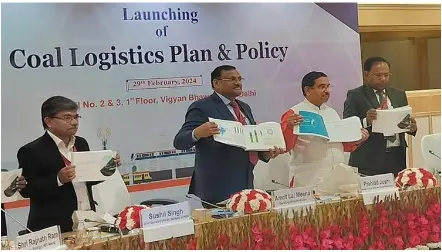
Coal Logistics Plan and Policy: Enhancing Efficiency and Sustainability
Background
- Persistent Coal Logistics Challenges
- Ongoing issues in coal logistics, especially during high-demand periods, necessitate special measures to prevent disruptions.
- Transportation challenges highlight the need for enhanced efficiency.
About the Coal Logistics Plan and Policy
- Objectives
- Enhance coal logistics in terms of affordability, efficiency, and environmental sustainability.
- Encompass various aspects like storage, loading, unloading, and delivery to diverse industries.
- Strategic Shift to Railway-Based System
- Focus on First Mile Connectivity (FMC) projects.
- Aims for a 14% reduction in rail logistic costs, targeting an annual cost-saving of Rs 21,000 Crore.
- Expected Outcomes
- Anticipated reduction of approximately 100,000 tonnes of carbon emissions annually.
- Aiming for a 10% reduction in the average turnaround time of wagons nationwide.
Status of the Coal Sector in India
- Overview of Coal
- Naturally occurring combustible sedimentary rock composed primarily of carbon and hydrocarbons.
- Forms through the accumulation and decomposition of plant material over millions of years.
- Coal Reserves and Clusters in India
- Concentrated in the eastern and central parts of the country.
- Major coal-producing states include Odisha, Chhattisgarh, Jharkhand, and parts of Madhya Pradesh.
- Types of Coal
- Anthracite, Bituminous coal, Lignite, Peat, each with varying carbon content and characteristics.
- Significance for India
- Accounts for 55% of the country's energy needs.
- Essential for India's industrial growth, supporting 70% of power demand through thermal power plants.
- Coal Imports Policy
- Allows unrestricted coal import under Open General License.
- Importers include steel, power, and cement sectors, meeting commercial requirements.
Challenges Related to Coal for India
- Environmental Impact
- Coal mining and combustion contribute to pollution, deforestation, and habitat destruction.
- Balancing environmental concerns with energy security poses a challenge.
- Health Risks
- Exposure to coal-related pollutants leads to health risks in nearby communities.
- Land Acquisition and Rehabilitation
- Acquiring land for coal mining disrupts communities, requiring proper rehabilitation.
- Technological Constraints
- Adoption of clean coal technologies faces challenges due to high costs.
- Transition to Renewable Energy
- Striking a balance between energy security and renewable energy objectives is crucial.
- India advocates for a "phase down" rather than a complete "phase out" of coal power.
Why India Advocates for Phasing Down Coal
- Energy Security
- Coal plays a vital role in India's energy security, providing a substantial portion of electricity generation.
- Abruptly phasing out coal could disrupt energy supply.
- Economic Considerations
- Coal-related industries support millions of jobs and contribute significantly to the economy.
- A sudden shift may lead to job losses and economic instability.
- Infrastructure Investment
- Substantial investments in coal-based infrastructure should be considered.
- Premature phasing out may result in stranded assets and wasted investments.
Way Forward
- Improving Energy Efficiency
- Enhance energy efficiency across the coal value chain.
- Implement high-efficiency, low-emission (HELE) technologies in coal-fired power plants.
- Diversification of Energy Sources
- Prioritize diversifying the energy mix by investing in renewable sources.
- Transition to Clean Coal Technologies
- Invest in research, development, and deployment of clean coal technologies.
- Promoting Sustainable Mining Practices
- Implement environmentally sustainable mining practices.
- Strengthen regulations and enforcement for compliance with environmental standards.
|
UPSC Previous Year Questions Prelims (2019) Q. Consider the following statements:
Which of the statements given above is/are correct? (a) 1 only Ans: (a) Prelims (2013) Q2. Which of the following is/are the characteristic/characteristics of Indian coal?
Select the correct answer using the codes given below: (a) 1 and 2 only Ans: (a) Mains (2021) Q. Despite India being one of the countries of Gondwanaland, its mining industry contributes much less to its Gross Domestic Product (GDP) in percentage. Discuss. Mains (2017) Q. “In spite of adverse environmental impact, coal mining is still inevitable for development”. Discuss. |
Source: PIB
Coral Reef Watch Programme
In News: The Coral Reef Watch program has issued a warning, signaling that the world is on the verge of encountering its fourth global mass coral bleaching event.
Coral Reef Watch: A Global Early-Warning System
- Overview of Coral Reef Watch
- Coral Reef Watch is a free online tool developed by the National Oceanic and Atmospheric Administration (NOAA).
- It serves as a global analysis platform for sea surface temperature (SST), offering outlooks to identify coral reefs susceptible to bleaching.
- The tool acts as the world's exclusive early-warning system for environmental changes in coral reef ecosystems.
- Monitoring and Early Warnings
- Utilizes remote sensing, modeled, and in situ data to remotely monitor conditions leading to coral bleaching, disease, and mortality.
- Delivers information and early warnings in near real-time to a diverse user community worldwide.
- Incorporates operational climate forecasts to provide outlooks on stressful environmental conditions affecting coral reefs globally.
- Data Incorporation
- Primarily relies on sea surface temperature (SST) data but also integrates light, ocean color, and other variables in its analysis.
- The decision support system operates by combining remote sensing information with modeled and in situ data.
Key Facts about Corals
- Nature of Corals
- Corals are marine invertebrates lacking a spine.
- Each individual coral is referred to as a polyp, and colonies form as polyps multiply.
- Symbiotic Relationship
- Corals share a symbiotic bond with single-celled algae known as zooxanthellae.
- The algae conduct photosynthesis, using sunlight to produce food and nutrients for the coral.
- Corals provide a habitat and essential nutrients for the algae, which contribute to the vibrant coloration of the corals.
- Great Barrier Reef - World's Largest
- Australia's Great Barrier Reef holds the title of the world's largest reef system, spanning an impressive 2,300 km.
Source: DTE
Parrot Fever (Psittacosis)
In News: In a recent occurrence, five individuals have succumbed to parrot fever in Europe this year.

Parrot Fever (Psittacosis): A Brief Overview
- Alternative Name
- Parrot Fever is commonly known as psittacosis.
- Causative Agent
- The disease is caused by the bacterium Chlamydophila psittaci (C. psittaci).
- Hosts and Transmission
- While the bacterium can infect various mammals, such as dogs, cats, and horses, its primary host is birds.
- Humans can contract psittacosis through inhalation of contaminated particles from feathers or droppings of infected birds.
- High-Risk Groups
- Individuals in close contact with birds, such as poultry workers, veterinarians, and pet-bird owners, are more susceptible to the disease.
- Transmission Dynamics
- Human-to-human transmission of psittacosis is extremely rare, with only a few reported cases.
- The main mode of transmission is through inhaling airborne particles containing C. psittaci.
- Symptoms
- Clinical manifestations include fever, headache, muscle pains, coughing, difficulty breathing, and symptoms resembling pneumonia.
- Complications
- Severe cases of psittacosis may lead to complications such as myocarditis or other neurological symptoms.
- Treatment
- Antibiotics, typically doxycycline or tetracycline, are the primary treatment, administered orally for two to three weeks.
- Supportive care, including over-the-counter medications for symptomatic relief, and maintaining proper hygiene practices play a crucial role in recovery.
Source: ET

Blue Leaders
In News: In Belgium, the Blue Leaders convened a High-Level Event focusing on Biodiversity Beyond National Jurisdiction in a recent gathering.
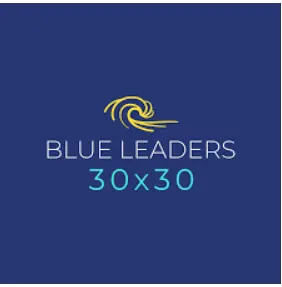
Blue Leaders: Advocates for Global Ocean Protection
- Group Overview
- The Blue Leaders form a proactive coalition of nations driven by the need for immediate action to safeguard the world's oceans amid challenges like the climate crisis, overfishing, and pollution.
- Commitment and Goals
- Blue Leaders are dedicated to achieving two primary objectives:
- Establishing a new international target to protect a minimum of 30% of the global ocean by 2030 through a network of highly and fully protected marine areas.
- Swiftly concluding a new High Seas Treaty that not only facilitates the creation of fully and highly protected marine areas in the high seas but also reinforces the management of human activities outside these protected zones.
- Key Events
- The inaugural Blue Leaders event occurred in New York during the 2019 United Nations General Assembly.
- The second event took place in Madrid, Spain, coinciding with the 2019 UN Climate Change Conference, known as 'The Blue COP.'
- 30x30 Advocacy
- Blue Leaders consistently champion the call for achieving the 30x30 goal, emphasizing the need for 30% of the ocean to be both fully and highly protected.
- "Fully protected" denotes areas where no extractive or destructive activities are permitted, while "highly protected" allows only light extractive activities, such as subsistence or small-scale fishing with minimal impact.
- Importance of Protected Areas
- Fully protected ocean parks serve as sanctuaries where extractive, polluting, and destructive human activities are strictly prohibited, providing safe havens for marine wildlife.
- Membership
- The Blue Leaders coalition comprises 24 member countries, united in their commitment to ocean protection.
- Notably, India is not a participant in this group.
Source: DTE
IRIS AI Robot
In News: A revolutionary advancement in education has surfaced in Thiruvananthapuram, Kerala, where a school has unveiled Iris, India's inaugural AI teacher robot.
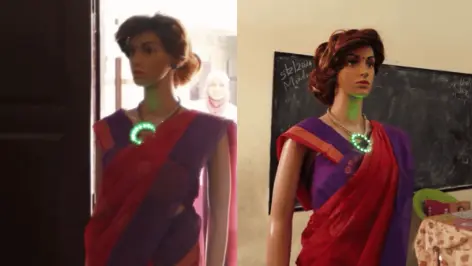
IRIS AI Robot: A Breakdown of Features
- Technological Foundation
- Fueled by Robotics and Generative AI technologies, Iris is equipped with a dedicated Intel processor and coprocessor, ensuring seamless and efficient performance.
- User Interface and Control
- Iris offers an Android App interface, enabling users to control and interact with the robot, ensuring a tailored learning experience.
- Active Classroom Presence
- Beyond being a passive presence, Iris functions as a dynamic voice assistant and an interactive learning tool within the classroom setting.
- AI Voice-Controlled Assistant
- Acting as an AI voice-controlled assistant, Iris responds to user queries, provides explanations, and delivers educational content, enhancing the learning environment.
- Interactive Learning Experiences
- Iris engages users through personalized content generation, quizzes, and interactive activities, fostering dynamic and participative learning.
- Mobility and Interaction
- With a 4-wheel chassis, Iris enjoys the freedom to move within its environment, facilitating interaction with users and navigating through learning spaces.
- Manipulative Capabilities
- Iris is equipped with hands featuring 5 Degrees of Freedom (DoF) each, enabling it to manipulate objects, perform demonstrations, and engage in hands-on learning activities.
- Versatility in Teaching
- The robot is designed to teach subjects ranging from nursery to Class 12, showcasing its adaptability across diverse educational levels.
- Multilingual Communication
- Iris currently communicates in three languages - English, Hindi, and Malayalam, enhancing accessibility for a wider user base.
- Origin and Creator
- Developed by Maker Labs, Iris AI Robot is a testament to innovative educational technology solutions.
Source: BT
Stalled Negotiations on Pancheshwar Multipurpose Project
In News: Despite the recent accord on extended power sharing between India and Nepal, advancements on the Pancheshwar Multipurpose Project (PMP) are currently stalled.
Pancheshwar Multipurpose Project (PMP) and India-Nepal Relations: Key Points
- Challenges in PMP Implementation
- The unresolved issues, particularly pertaining to the equitable distribution of benefits, create a significant hurdle in the progress of the Pancheshwar Multipurpose Project (PMP).
- Bilateral Agreement for Power Export
- In January 2023, both India and Nepal entered into a bilateral agreement, outlining plans for the export of 10,000 MW of power over the next decade.
- Project Overview
- PMP is a joint hydropower initiative planned for development along the Mahakali River, which forms the border between India and Nepal.
- Historical Mahakali Treaty
- In February 1996, India and Nepal signed the Mahakali Treaty, a pivotal agreement that set the framework for various aspects, with the implementation of the Pancheshwar Multipurpose Project serving as its centerpiece.
- Centrepiece of the Mahakali Treaty
- The successful execution of the Pancheshwar Multipurpose Project is a central and crucial element within the Mahakali Treaty, symbolizing the commitment to cooperation and shared benefits between the two nations.
Source: TH
James Webb Telescope Spots Oldest Dead Galaxy
In News: The James Webb Space Telescope (JWST) has revealed a groundbreaking discovery—a dormant galaxy that ceased star formation around 13 billion years ago, just 700 million years after the Big Bang.
Insights into a Dead Galaxy's History and JWST Observations
- Limited Star Formation Period
- The life of the dead galaxy witnessed a brief yet intense phase of star formation spanning 30 to 90 million years, abruptly halting star formation activity between 10 and 20 million years before the observation by the James Webb Space Telescope (JWST).
- Comparative Mass
- The galaxy's mass is similar to that of the Small Magellanic Cloud (SMC), a dwarf galaxy located in close proximity to the Milky Way.
- Understanding Star Formation Dynamics
- Observations suggest that early universe gas cloud collapses played a pivotal role in facilitating star formation. However, factors such as supermassive black holes or gas depletion within galaxies can bring this process to a halt.
- Implications of Gas Depletion
- Internal factors like rapid gas consumption without replenishment can lead to gas depletion, causing galaxies to transition from active star-forming states to dormant phases.
- Potential for Rejuvenation
- The ever-changing nature of the early universe hints at the possibility of dead galaxies experiencing rejuvenation, a prospect that awaits further detailed observations.
- Introduction to the JWST
- The James Webb Space Telescope (JWST) is a collaborative effort between NASA, the European Space Agency (ESA), and the Canadian Space Agency.
- Launch and Current Location
- Launched in December 2021, the JWST is currently positioned at the Sun-Earth L2 Lagrange point, approximately 1.5 million km beyond Earth’s orbit around the Sun.
- Noteworthy Features
- As the largest and most potent infrared space telescope ever built, the JWST succeeds the Hubble Telescope, offering unprecedented capabilities for exploring the cosmos.
Source: DTE
Aiming for a Cervical Cancer-Free Future
In News: A recent article explores the imperative need and challenges encountered by the HPV vaccination program designed to eradicate cervical cancer in the nation.
Why Fighting with Cervical Cancer is Crucial for India?
- High Prevalence and Mortality Rates
- Second most common cancer among Indian women, causing around 1.27 lakh cases and 80,000 deaths annually.
- Comorbidities and Risk Factors
- Human papillomavirus (HPV) infection, transmitted through sexual contact, a leading cause.
- High prevalence of comorbidities and risk factors complicates eradication efforts.
- Disproportionate Impact on Underserved Communities
- Affects underserved women due to limited healthcare access, awareness, and socio-economic factors.
- Economic Burden
- Significant economic strain with costs related to diagnosis, treatment, and care.
- Impact on Women's Well-being
- Affects women in their prime, leading to premature deaths and impacting families' stability.
- Human Rights Issue
- Access to affordable healthcare, including HPV vaccination and screening, is a women's right.
- Long-term Benefits
- Investing in prevention yields benefits for public health, life expectancy, and SDG progress.
Obstacles Hinder the Eradication of Cervical Cancer in India
- Limited Awareness
- Lack of awareness in rural areas about cervical cancer and preventive measures.
- Inadequate Screening Programs
- Absence of widespread and accessible screening programs leads to late-stage diagnoses.
- Lack of Access to Formal Health Care
- Insufficient healthcare infrastructure, particularly in rural areas.
- Shortage of Skilled Personnel
- Lack of skilled healthcare professionals in cervical cancer prevention and treatment.
- Stigma and Cultural Barriers
- Sociocultural taboos hinder women from seeking timely medical care.
- Vaccine Hesitancy
- Misinformation contributes to hesitancy, affecting vaccination coverage rates.
- Affordability and Accessibility
- Cost barriers for vaccines, tests, and treatments, especially for low-income individuals.
- Geographic Disparities
- Varied incidence rates and healthcare resources across regions.
- Limited Government Funding
- Insufficient funding hampers comprehensive strategies and interventions.
- Limited Research and Innovation
- Need for research on affordable screening tools, diagnostics, and treatments.
How India Can Battle the Menace of Cervical Cancer?
- HPV Vaccination
- Key in preventing persistent high-risk HPV infections and cervical cancer.
- Opportunity for Early Detection and Treatment
- 10–15 year pre-invasive phase allows for early detection and outpatient treatment.
- Indigenous Vaccine Development
- India's quadrivalent vaccine, Cervavac, promises accessibility and affordability.
- Draw Lessons from Global Success
- Learn from successful global HPV vaccination programs.
- '90-70-90' Targets by WHO
- WHO targets for vaccination, screening, and treatment by 2030.
- Role of Technological Advancements
- Single-dose HPV vaccination, self-sampling, and AI technologies enhance prevention.
- Population-Level Awareness and Strategies
- Increase awareness, promote HPV vaccine uptake, overcome hesitancy, and implement screening.
Conclusion
Urgent need for preventive measures, emphasizing early detection, reduced financial burden, and robust health systems for successful cervical cancer elimination.
|
UPSC Previous Year Questions Prelims (2016) Q. ‘Mission Indradhanush’ launched by the Government of India pertains to (a) Immunization of children and pregnant women Ans: A Mains (2021) Q1. What are the research and developmental achievements in applied biotechnology? How will these achievements help to uplift the poorer sections of the society? |
Source: TH
Share the article
Edukemy’s Current Affairs Quiz is published with multiple choice questions for UPSC exams
MCQ
Get Latest Updates on Offers, Event dates, and free Mentorship sessions.

Get in touch with our Expert Academic Counsellors 👋
FAQs
UPSC Daily Current Affairs focuses on learning current events on a daily basis. An aspirant needs to study regular and updated information about current events, news, and relevant topics that are important for UPSC aspirants. It covers national and international affairs, government policies, socio-economic issues, science and technology advancements, and more.
UPSC Daily Current Affairs provides aspirants with a concise and comprehensive overview of the latest happenings and developments across various fields. It helps aspirants stay updated with current affairs and provides them with valuable insights and analysis, which are essential for answering questions in the UPSC examinations. It enhances their knowledge, analytical skills, and ability to connect current affairs with the UPSC syllabus.
UPSC Daily Current Affairs covers a wide range of topics, including politics, economics, science and technology, environment, social issues, governance, international relations, and more. It offers news summaries, in-depth analyses, editorials, opinion pieces, and relevant study materials. It also provides practice questions and quizzes to help aspirants test their understanding of current affairs.
Edukemy's UPSC Daily Current Affairs can be accessed through:
- UPSC Daily Current Affairs can be accessed through Current Affairs tab at the top of the Main Page of Edukemy.
- Edukemy Mobile app: The Daily Current Affairs can also be access through Edukemy Mobile App.
- Social media: Follow Edukemy’s official social media accounts or pages that provide UPSC Daily Current Affairs updates, including Facebook, Twitter, or Telegram channels.


